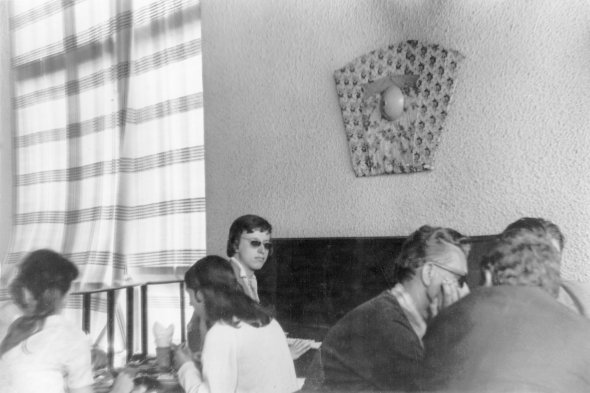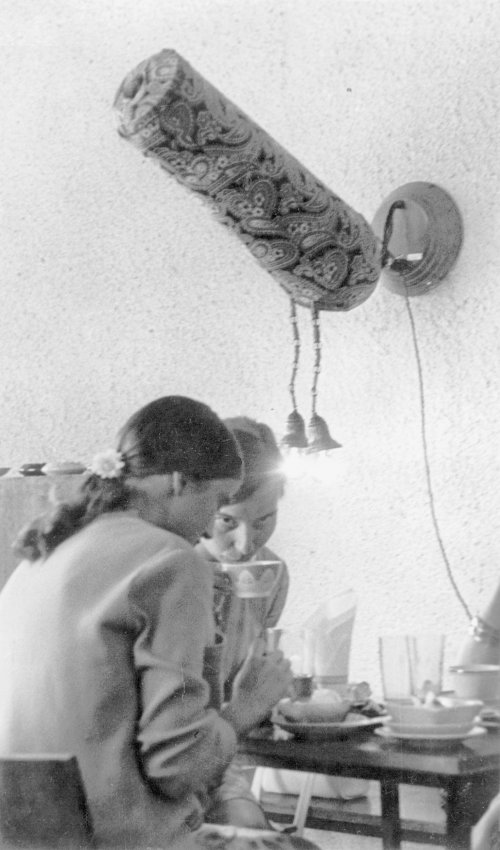Estonian Avant-Garde Art – exhibition
The exhibition “Estonian Avant-Garde Art” that opened as part of the third International Finno-Ugric Days was supposed to become a group exhibition of the most radical Estonian art groups active at the time: ANK’64[1], Visarid[2], and SOUP’69. However, due to changes in the political situation[3], many artists decided not to participate.
The few faded photographs of the exhibition that have survived dynamically convey a sense of the exhibition itself as well as the space, which differs greatly from the white cube of the gallery. These are not anonymous shots of an exhibition; rather, they show the works in the social atmosphere of the café. The setting was probably important for creating the works as well. Most of the artworks are inspired by Pop Art—the notion of wanting to shock and grab attention is apprehensible. Urbla’s phallic object Kazachok made from patterned chintz, Tolts’s textile assemblages like the one titled Sleeping Place, and Lapin’s two readymades (pillows) all play with the idea of blurring the line between art and everyday objects. Relating to reality and its mass-produced objects—a concept stemming from Pop Art—leads to the idea of the artist’s need to intervene, which in turn becomes the agenda for the following years. This new role of the artist (and its unique accompanying capabilities) was also referenced on the exhibition poster, which displayed a red cross and a crescent moon along with the slogan, “Sick ones, we will heal you!”
ANK’64 was the first artist’s group in the Soviet period. It formed 1964 from the students of printmaking at the State Institute of Art, including Tõnis Vint, Malle Leis (1940), Jüri Arrak (1936), Kristiina Kaasik (1943), Tiiu Pallo-Vaik (1941), Enno Ootsing (1940), Tõnis Laanemaa (1937), Aili Vint (1941), Marju Mutsu (1941-1980), Vello Tamm (1940-1991). Their pursuits in art were connected with youth culture, Pop and Op Art, as well as with the Avant-Gardes of the early 20th century.
The artist’s group Visarid formed 1968 around the art studio of the Tartu State University and the head of the studio Kaljo Põllu (1934-2010). Other members were: Peeter Lukats (1933), Jaak Olep (1945-2000), Rein Tammik (1947), Enn Tegova (1946), Peeter Urbla (1945), et. al. Visarid advocated “total art”, art that do not design individual commodities, but reorganize the hole environment. The group dissolved 1972.
In aftermath of the Prague Spring events the pressure on artists as well as other members of the society got higher, the system got more repressive.
Date: 17 – 23 August 1970
Participants: Enn Tegova (1946), Peeter Urbla (1945), Rein Tammik (1947), Vello Tamm (1940-1991), Ando Keskküla (1950-2008), Andres Tolts (1949), Leonhard Lapin (1947), and Sirje Runge (1950)
Location: Café Pegasus, Tallinn


